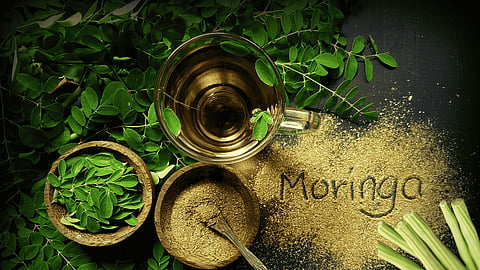

Moringa, often called the ‘miracle tree,’ offers immense nutritional benefits and serves as a powerful tool for reforestation and soil restoration in India’s arid regions. Rich in vitamins, minerals, and antioxidants, moringa leaves and pods support health and immunity. Simultaneously, its fast-growing, drought-resistant nature helps combat desertification and improve soil quality. This guide explores moringa’s dual role in sustainable nutrition and ecological revival, with practical tips on incorporating moringa products into daily life.
Moringa oleifera, commonly known as the drumstick tree or ‘shigru’ in many Indian languages, has earned the title of a superfood due to its exceptional nutritional profile and environmental benefits. Native to the Indian subcontinent, moringa is deeply embedded in Indian cuisine and traditional medicine, but its value extends far beyond the kitchen.
Nutritional Powerhouse: Why Moringa Matters
Moringa leaves are a rich source of essential nutrients, including vitamins A, C, and E, calcium, potassium, and iron. They also contain high levels of protein and antioxidants like quercetin and chlorogenic acid, which can help combat oxidative stress and inflammation. The pods, commonly known as drumsticks, are a staple in many Indian households and are prized for their delicate flavor and nutrient content.
In regions where malnutrition and vitamin deficiencies are prevalent, moringa serves as a natural supplement to boost health. For example, rural communities can easily grow moringa trees in their backyards, using fresh leaves in dals, vegetable curries, and chutneys. Dried moringa leaf powder is also gaining popularity as a convenient way to enhance smoothies, soups, and traditional beverages like buttermilk.
Ecological Ally: Moringa for Reforestation and Soil Health
Beyond nutrition, moringa plays a vital role in ecological restoration, especially in India's arid and semi-arid regions such as Rajasthan, parts of Gujarat, and Madhya Pradesh. Its fast growth rate and drought tolerance make it ideal for planting in degraded landscapes prone to desertification.
Moringa trees improve soil fertility by reducing erosion with their extensive root systems and enriching the soil through leaf litter that acts as organic mulch. Their ability to fix nitrogen helps replenish essential nutrients, promoting the growth of other crops nearby. These qualities make moringa an important species in agroforestry and sustainable farming practices.
Practical Tips for Using Moringa in Daily Life
- Fresh Leaves: Use freshly plucked moringa leaves in dals, stir-fries, or soups for a nutrient boost.
- Dried Leaf Powder: Add 1-2 teaspoons of moringa powder to smoothies or buttermilk for an easy health supplement. Brands like Organic India offer certified organic moringa powders as an example.
- Drumsticks: Incorporate drumsticks into sambar or curries, a traditional South Indian use that provides both flavor and nutrition.
- Seed Oil: Moringa seed oil, sometimes called ‘ben oil,’ is used for cooking and skincare, prized for its stability and nutrient content.
Community and Environmental Impact
Several NGOs and government initiatives in India promote moringa cultivation to combat malnutrition and environmental degradation simultaneously. For instance, the Moringa Foundation works with rural farmers to encourage planting moringa trees, providing both a source of income and environmental benefits.
Conclusion
Moringa’s dual role as a superfood and ecological champion makes it uniquely valuable for India’s sustainability journey. Embracing moringa not only enriches diets with vital nutrients but also supports reforestation and soil conservation efforts crucial for combating climate change and desertification. By integrating moringa into everyday meals and farming practices, Indians can nourish themselves while nurturing the planet.
